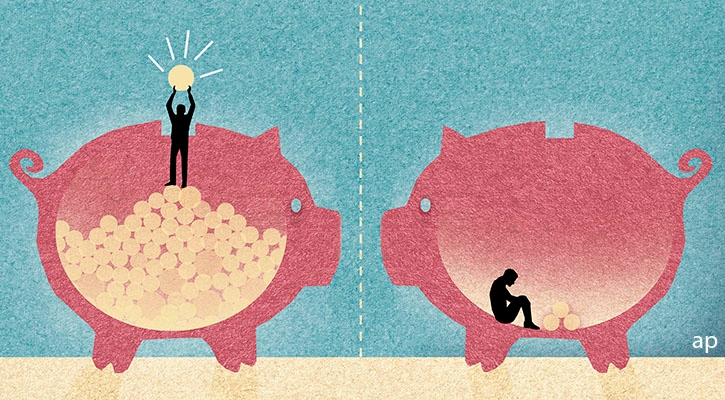There are only a couple of weeks to go until the deadline for filing a 2015 income-tax return. You aren't alone if you still are scrambling to dig out the various "T" income slips, receipts and other paperwork you'll need to give to your accountant or whoever prepares your tax return for you -- or to use yourself if you are knowledgeable, patient and brave enough to tackle the task yourself.
While employers deliver T4s and other employment-related income slips to employees by the end of February, if you are an investor it isn't unusual to still be waiting for T5s and T3s into April. Hence the traditional scramble as the April 30 deadline nears.
Actually, the last day for filing 2015 returns is Monday, May 2, since the 30th falls on a Saturday this year. Also, if you are self-employed, you don't have to file your personal tax return until June 15 -- although you will have to ensure your taxes are paid in full by April 30.
The CRA says about 80% of returns are filed electronically, using E-file if sent in by tax professionals, or Netfile if sent by individuals using tax software, while 20% continue to be filed using the paper forms. When filing electronically, you don't send in supporting slips and receipts to the tax department. Instead, you must retain them in case the government wishes to see them, in the event of an unusual claim or amount, or due to a random spot check.
When filing electronically, you must pay any balance owing by the deadline. This can be done via electronic banking, or manually at a bank branch or at a tax-department office. If you are filing by paper, you can enclose a personal cheque or money order with your return.
Here is a checklist of important tax-return items to heed, as well as new rules to follow for the first time for your 2015 return:
Total income
The main income source for most people is salary or wages from employment. The next most typical income source is from investments: interest, dividends and capital gains. But there may be other items that can constitute your total income, says Caroline Battista, senior tax analyst for H&R Block: "Did you cash in some of your RRSP? Did you make money from the sale of your home? Did you rent out your apartment? Use your car for a ride-sharing service? Rent your tools to folks in your neighbourhood? Know your income, what needs to be declared and whether or not any tax has been withheld."
Pension income
Old Age Security, which everyone is eligible to begin receiving at age 65, is not taxable. However, income from the Canada (or Quebec) Pension Plan is taxable, so ensure this amount is shown on the T4A(P) slip that should have been provided to you by CPP/QPP. If you don't have it, you can obtain the income amount to report by contacting CPP or QPP. Be sure to report all income from an employer registered pension plan, registered retirement income fund (RRIF) or registered annuity.
Disability credit
If you or a family member are suffering from an illness or experiencing a disability, you may be able to claim the disability tax credit. "If you are living with a parent 65 or older or an infirm dependent, then there may be as much as $6,701 in additional credits you can claim," says HRB's Battista. "This is one of the lesser known tax deductions available, so take time to learn how it might help you."
Medical expenses
You can claim eligible medical expenses not already paid by a group health plan. Only the amount in excess of 3% of your net income or $2,208 -- whichever is less -- can be claimed. Net income is your total income, less deductions such as an RRSP contribution deduction, union or professional dues, child-care expenses, moving expenses, deductible support payments, investment carrying charges or interest, and social-benefits repayments ("clawbacks").
If you have a family, your spouse's and children's medical expenses can be pooled, making it easier to surpass the threshold and thus be able to make a claim. What's more, medical expenses incurred during any 12-month period ending in 2015 can be claimed on your 2015 return. So if you or other family members had major medical, drug and/or dental bills during, say, from May 2104, they can be included in a claim for the 12 months ended April 2015. Expenses incurred after April 2015 would be saved for possible use on your 2016 return.
What's new for 2015
There are myriad other credits and deductions of which you should be aware, such as those related to parents, students, charitable and political donations. The list goes on and they are too numerous to cover here. The following are some of the recent changes and others item of note on the 2015 tax return, according to H&R Block:
Family tax cut is still available: 2015 is the last year for this non-refundable tax credit, launched in late 2014, of up to $2,000 intended to help families with children under age 18 who are living at home. "One spouse claims a credit for the taxes they would have saved if they had split their income off to the other spouse's return," Battista says. "Even if someone didn't qualify for the family tax cut for 2014, they are still encouraged to look into whether or not they'll qualify for it this year."
Child-care claim has increased: The limit for child-care expenses has been increased by $1,000. These are claimed as a deduction from income, as opposed to a tax credit, and thus decrease the amount of taxable income for parents.
Universal child-care benefit has been enhanced: This provides direct financial support to Canadian families with young children. "There are a couple of changes to the UCCB that puts more money into the pockets of these families," Battista says, including a new payment for children aged six to 17 and higher payments for children under six. Remember to report the amounts received as income on your tax returns. Note that the "Amount for children" that used to be claimed using Schedule 1 is no longer available, although family caregivers for children with physical or mental disabilities are eligible for a tax credit.
Children's fitness tax credit is now refundable: This allows families to claim the cost of children's fitness activities up to a maximum of $1,000. "As of the 2015 tax filing year, it is now a refundable tax credit, which means you will get some of those expenses back whether they owe tax or not," Battista says.
First-time donor's super credit can be claimed until 2017: This is intended to encourage donations by people who have not given to a registered charity in the past, and includes those who have not made a donation claim on their tax returns since 2007. It can be claimed once, through the 2017 tax year. It provides an extra 25% non-refundable federal tax credit when you claim a charitable-donation tax credit. Based on the existing rules for the charitable donation credit, this allows a 40% federal credit for up to $200 in cash donations and a 54% credit for the part of the donation between $200 and $1,000.
More content from Morningstar's Focus on taxes:
- Make the most of tax breaks for equities
- Fixed-income taxation demystified
- How mutual funds and ETFs are taxed
- Rudy's tax reminders




















